Info
Subfamily: Panicoideae
Genus etymology: Urochloa = "tail grass" [Greek] refering to the small tail (mucro) of the upper lemma of some species
Species etymology: mutica = "blunt" [Latin] refering to unawned florets
Photosynthetic type: C4 (warm season)
Nativity: naturalized - intentional
First recorded in Hawaiʻi: 1902
Map
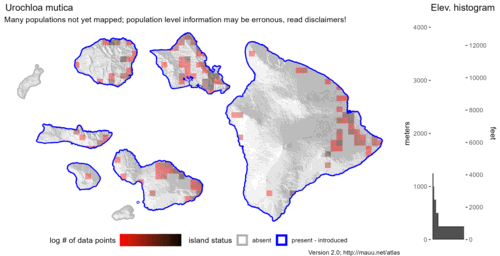

Inflorescence
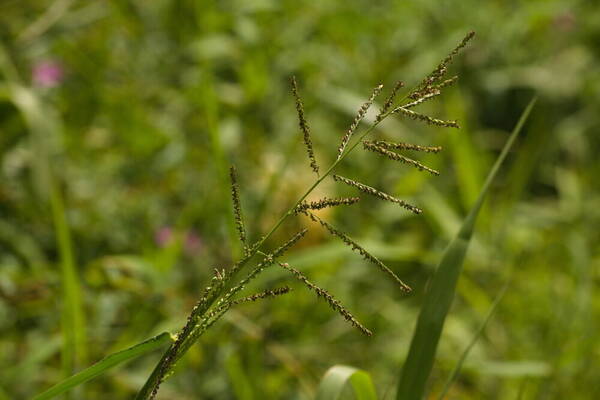
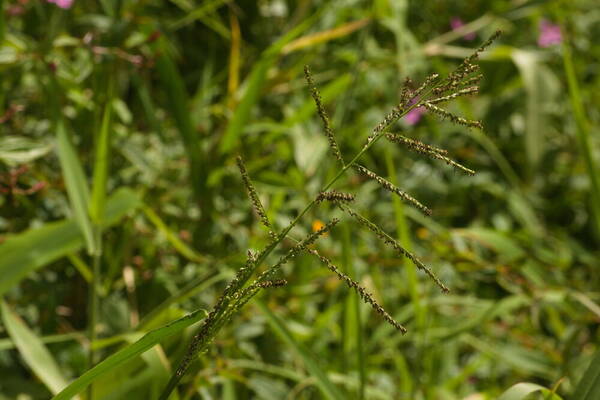



Plant

Habit


Spikelets
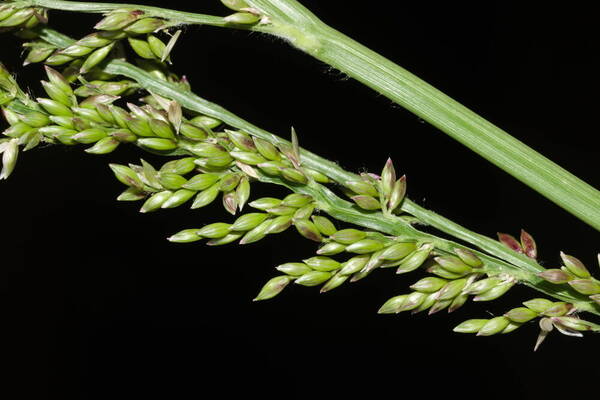


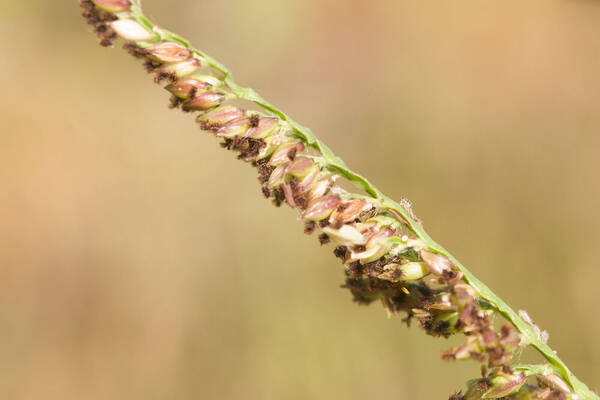








Landscape
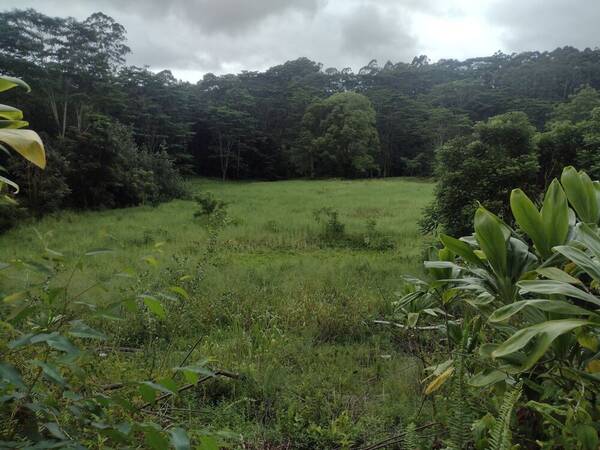
Collar


Description
Sprawling perennial; culms 25–125 cm. high, prostrate and rooting at the nodes below; leaf-blades 6–30 cm. long, 3–15 mm. wide. Inflorescence of 5–20 racemes on an axis 7–20 cm. long; racemes 2–10 cm. long, bearing paired spikelets (but these sometimes on short secondary branchlets in the lower part of the raceme or borne singly in the upper part) in several untidy rows on a narrow (0.5–1 mm.) winged rhachis with scabrid margins; pedicels usually with a few long hairs. Spikelets elliptic, 2.5–3.5 mm. long, glabrous, acute; lower glume 1/4–1/3 as long as the spikelet; upper glume not separated from the lower by an internode; upper lemma rugulose, obtuse, ± an obscure mucro.
(Description source: Clayton, W.D. & Renvoize, S.A. 1982. Flora of Tropical East Africa. Gramineae (Part 3). A.A. Balkema, Rotterdam. 448 pp. )
Plants perennial; stoloniferous, straggling. Culms to 5 m long, long-decumbent and rooting at the lower nodes, vertical portion 90-200(300) cm; nodes villous. Lower sheaths with papillose-based hairs, these more dense distally, margins ciliate; collars pubescent; ligules 1-1.5 mm; blades 7.5-35 cm long, 4-20 mm wide, glabrous or sparsely pilose on both surfaces, margins scabrous. Panicles 10-25 cm long, 5-10 cm wide, pyramidal, with 10-30 spikelike branches in more than 2 ranks; primary branches 2.5-8 cm long, 0.4-0.9 mm wide, ascending to divergent, axils pubescent, axes flat, glabrous or with a few papillose-based hairs, secondary branches present or absent; pedicels shorter than the spikelets, scabrous, sometimes with hairs. Spikelets 2.6-3.5 mm long, 1-1.4 mm wide, mostly in pairs, in 2-4 rows, appressed to the branches, purplish to green. Glumes scarcely separate, rachilla internodes short not pronounced; lower glumes 0.6-1.1 mm, 1/5 – 1/3 as long as the spikelets, glabrous, 0-1(3)-veined; upper glumes 2.6-3.5 mm, glabrous, 5-(7)-veined, without cross venation; lower florets staminate; lower lemmas 2.6-3.3 mm, glabrous, 5-veined, without cross venation; upper lemmas 2.3-2.8 mm long, 1-1.3 mm wide, apices rounded, mucronate; anthers 1-1.5 mm. Caryopses 1.8-2 mm. 2n = 18, 36.
(Description source: Barkworth, M.E., Capels, K.M., Long, S. & Piep, M.B. (eds.) 2003. Flora of North America, north of Mexico. Volume 25. Magnoliophyta: Commelinidae (in part): Poaceae, Part 2. Oxford University Press, New York. 783 pp http://floranorthamerica.org/Urochloa_mutica )
Sprawling perennials; culms up to 6 m long, becoming decumbent and rooting at lower nodes, branching from lower and middle nodes, internodes glabrous, hollow, thick-walled, nodes prominent, retrorsely papillose-hirsute. Sheaths longer than internodes, papillose-hirsute to subglabrous; ligule membranous, 1.5-1.8 mm long, densely white ciliate, collar finely velvety pubescent; blades flat, up to 25 cm long, up to 15 mm wide, usually glabrous or with a few hairs near base, midrib broad and white above near base, margins thick, purple, scabrous. Inflorescences terminal on leafy branches, up to 20 cm long, consisting of several to numerous, solitary or clustered, ascending racemes 1-7 cm long, velvety pubescent at base; spikelets solitary, paired, or in small clusters along lower sides of the trigonous rachis, the rachis up to 1 mm wide, the angles scabrous, sparsely papillose; spikelets 3.2-3.4 mm long, ovate, acute, often purple, glabrous; first glume 0.8-1.2 mm long, deltate, 1-nerved, second glume and first lemma equal, about as long as the spikelet, second glume 5-7-nerved; first lemma S-nerved, enclosing a large palea that often protrudes between first lemma and second glume, lemma of fertile floret 2.1-2.5 mm long, elliptic-ovate, striate or rugulose; palea flat. Caryopsis infrequently developed. [2n = 18, 36, 52.]
(Description source: O’Connor, P.J. 1990. Poaceae, pp. 1481–1604. In: Wagner W.L., Herbst D.R. & Sohmer S.H. (eds.)., Manual of the flowering plant of Hawaiʻi. Vol. 2. University of Hawaii Press & Bishop Museum Press, Honolulu )